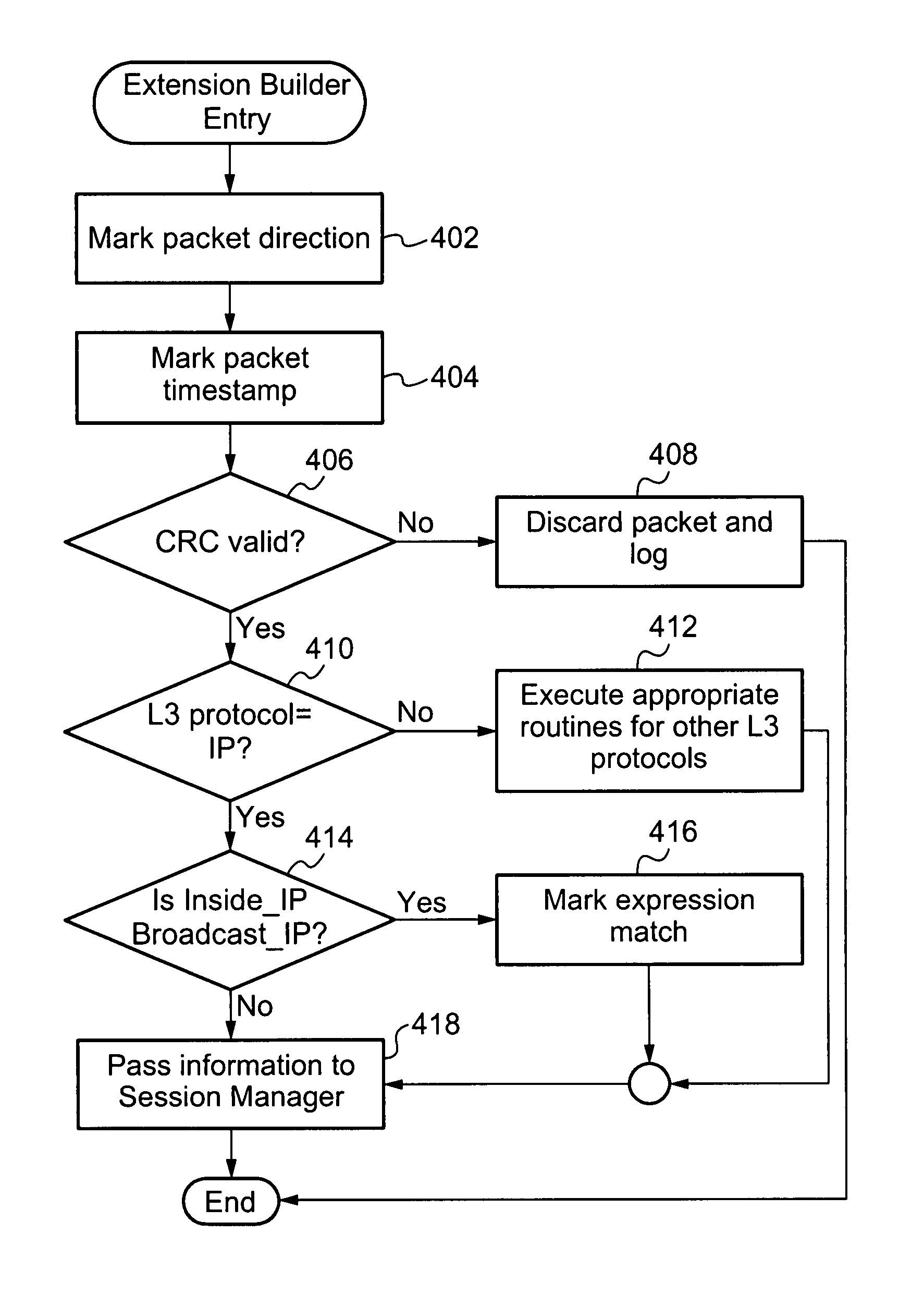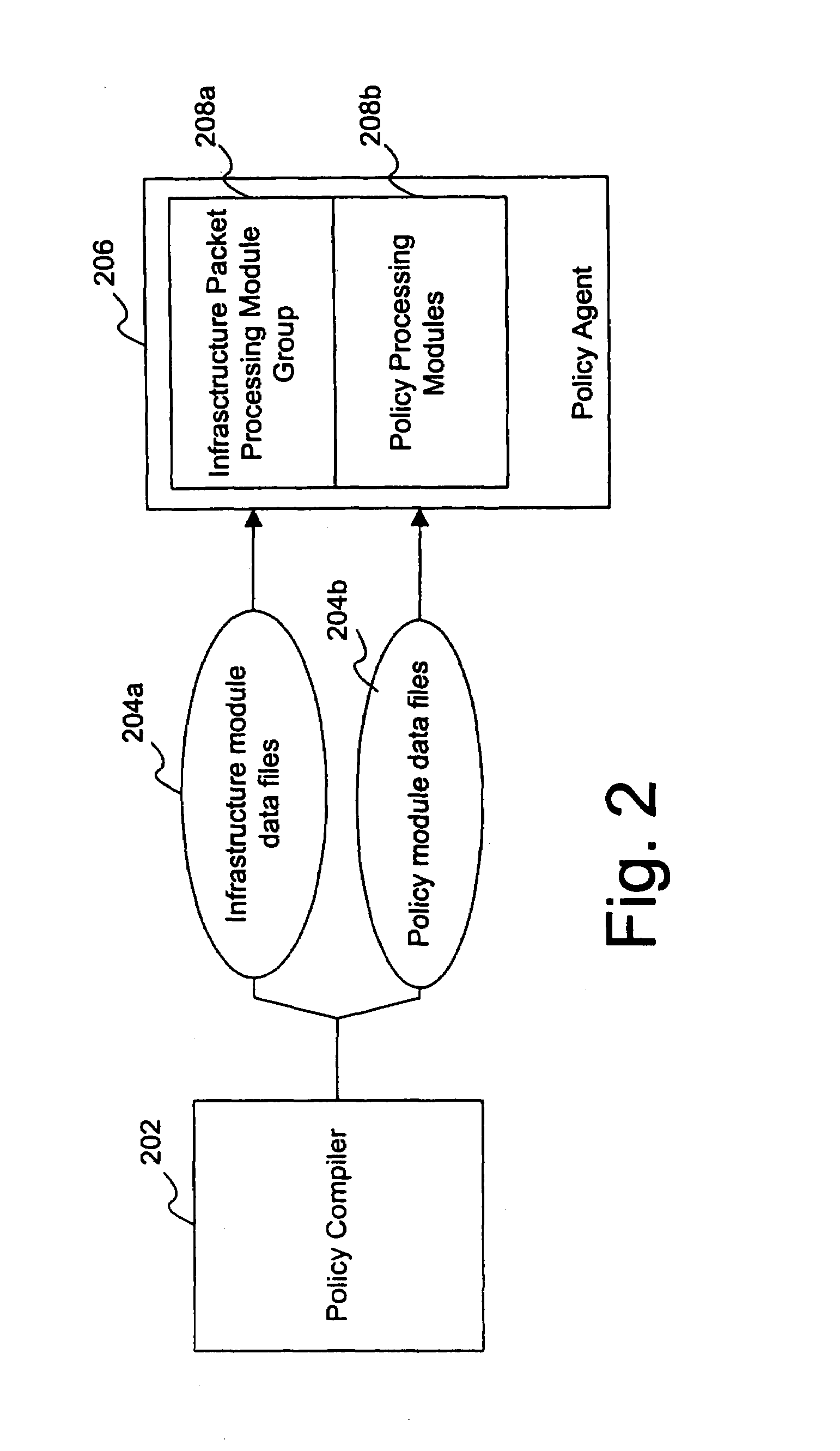Architecture for an integrated policy enforcement system
a technology of policy enforcement and architecture, applied in the field of policy enforcement, can solve problems such as adverse effects on policy enforcement, lack of tools to enable policy enforcement to provide integration, and inability to secure and reliable network infrastructur
- Summary
- Abstract
- Description
- Claims
- Application Information
AI Technical Summary
Benefits of technology
Problems solved by technology
Method used
Image
Examples
Embodiment Construction
[0034]In the following description, for purposes of explanation, numerous details are set forth, such as flowcharts and system configurations, in order to provide an understanding of one or more embodiments of the present invention. However, it is and will be apparent to one skilled in the art that these specific details are not required in order to practice the present invention.
[0035]As used herein, the term packets broadly refers to units of data that are sent on any packet-switched network or the like, and encompasses Transmission Control Protocol / Internet Protocol (TCP / IP) packets, User Datagram Protocol (UDP) packets, which may also be referred to as datagrams, or any other such units of data.
[0036]The block diagram of FIG. 1 illustrates an example of a system 100 in which the policy agent 104 operates. The policy agent 104 may be variously embodied in software, hardware, or a combination thereof as described below. The policy agent 104 may be embodied in a product such as the...
PUM
 Login to View More
Login to View More Abstract
Description
Claims
Application Information
 Login to View More
Login to View More - R&D
- Intellectual Property
- Life Sciences
- Materials
- Tech Scout
- Unparalleled Data Quality
- Higher Quality Content
- 60% Fewer Hallucinations
Browse by: Latest US Patents, China's latest patents, Technical Efficacy Thesaurus, Application Domain, Technology Topic, Popular Technical Reports.
© 2025 PatSnap. All rights reserved.Legal|Privacy policy|Modern Slavery Act Transparency Statement|Sitemap|About US| Contact US: help@patsnap.com



